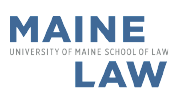Document Type
Article
Publication Date
2007
Abstract
Public access to ideas and information is critically important to creativity, competition, innovation, and a democratic culture. Nonetheless, material that belongs in the public domain is increasingly being transformed into private property. Data which was once freely available has become inaccessible as a result of legislatively or judicially sanctioned technological and contractual constraints. This is due in large part to the fact that lawmakers promulgating legislation and judges resolving disputes concerning data have failed to adequately take into account the multi-dimensional problems involved in controversies concerning access to ideas and information. The focus is often inappropriately centered on the tangible property within which the information is contained, such as a software program or a computer server. Once an owner of such personal property is ascertained, all of the conventional attributes of ownership are normally granted, including the right to exclude. Furthermore, almost insurmountable obstacles are faced by any other party whose interests might be affected by such a declaration of property rights, as the burden almost always falls on these other parties to explain why the previously identified owner's rights should be limited. Such a myopic view of property rights allows for the tight control of access to and use of information contained within the tangible property. Although in certain circumstances this generally unrestricted power may seem reasonable, usually it is not. The traditional model of ownership lacks the necessary flexibility to recognize the context within which such data related disputes occur and the impact such decisions may have upon prospective users of material that arguably belongs in the public domain. Moreover, it also fails to adequately acknowledge that the way in which we structure property rights is reflective of the type of society we wish to create and the values we find important. We therefore need to adopt a more appropriate theoretical framework to evaluate conflicts that may result in the contraction of the public domain. Despite the inherent limitations of applying tangible property concepts to the information technology setting, a variation of the entitlement theory of ownership would appear to be the basis for a workable heuristic. This model shifts the inquiry away from determining an absolute owner of property to instead identifying the competing interests of all parties with legitimate claims to the property in question. In the case of controversies concerning ideas and information that potentially affect the public domain, such an approach would ensure that judges and policy makers give more comprehensive attention to the various interests involved, while also recognizing the role that property law plays in shaping social relations and the marketplace.
Publication Title
Journal of Intellectual Property Law
Volume
15
Article Number
1012
First Page
1
Last Page
38
Suggested Bluebook Citation
Christine G. Davik,
A Panoptic Approach to Information Policy: Utilizing a more Balanced Theory of Property in Order to Ensure the Existence of a Prodigious Public Domain,
15
J. Intell. Prop. L.
1
(2007).
Available at:
https://digitalcommons.mainelaw.maine.edu/faculty-publications/14

